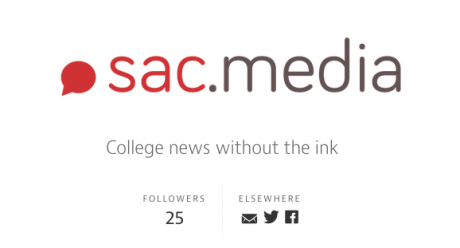Last year, in the wake of a shooting spree in the California town of Isla Vista that left seven people dead, student journalists from nearby Mt. San Antonio College drove into town to cover the story.
It was an important one for them. The killings took place less than three hours away from their community college and were perpetrated by Elliot Rodger, who was himself a former community college student.
The resulting article was a two-page cover story that ran more than 2,000 words and spanned two pages of the newspaper’s June 11 issue. After it was finished, the students eagerly awaited their campus’ reaction to the latest edition. But publication day came and went, and most of the newspapers remained in the racks.
“It sucked,” said Albert Serna, who was then editor-in-chief of the Mountaineer, the student newspaper. “It was a horrible feeling.”
It proved to be a defining moment for the newspaper, an award-winning publication that was losing traction with its print readership, said Toni Albertson, a professor in the college’s journalism program and the adviser to the student publications there. In the past, the student journalists watched newspapers blow away from their racks like tumbleweeds as the Santa Ana winds kicked up. Tired of seeing their ink-and-paper edition ignored and eager to experiment with digital news, the staff of the Mountaineer decided over the summer to cut the print newspaper entirely and move its stories online.
And Thursday, the staff of the Mountaineer took another step toward reimagining their news report when they launched Sac.media, a student publication hosted exclusively on Medium. Going forward, the newspaper will run all of its news stories on the publishing platform and broaden its coverage to include several nearby communities. The move will be accompanied by a greater emphasis on covering events on social media, and a decision to set aside space on Medium for stories that warrant greater depth and analysis, Albertson said.

A screenshot of Sac.media, the new home of the publication formerly known as the Mountaineer.
The decision to publish what was previously the Mountaineer on Medium was informed by an earlier experiment undertaken by the student journalists. When they cut the print edition of the newspaper last year, they also axed the ink-and-paper version of their magazine, Substance, and moved it to Medium.
The decision was transformative for the students, Albertson said. The clean aesthetic of Medium invigorated the newsroom and had the students competing with one another to land a byline in the new version of the magazine. Freed from print deadlines, the students felt they had the time to do quality work that was being seen by Medium’s wider community of readers. An early post from the publication, an exploration of gay Latino machismo culture by Serna, generated 15 times as much traffic as their most successful post prior to joining Medium. Before that, the most widely-read story received 800 pageviews, Albertson said.
“It was like somebody’s pumping oxygen in the newsroom,” she said. “Everything’s changed. They were tired of putting out a publication that no one read.”
Mt. San Antonio College’s decision to ditch the print edition for Medium is a move not all student publications could afford to make. Many college newspapers are kept afloat by print advertising revenue, whether in the pages of their regular editions or in special supplements geared toward a specific theme. However, the printing costs for Substance and the Mountaineer were covered by the college, which kept the money flowing even as the students stopped printing.
That doesn’t mean the student journalists have given up on advertising, however. Albertson says she’s hoping to land a sponsor for the Medium site that will pay more money than the newspaper generated during the last semester.
And Medium has recently signaled to publishers that it’s interested in providing the advertising support to fund contributors to the site. In an interview with Digiday published Thursday, Medium corporate development head Edward Lichty said the company is looking at funding “content creators with a variety of revenue,” starting with brand partnerships. The company also recently announced a pilot program offering a select group of publishers, including Substance, their own unique URLs with distinct branding.
It remains to be seen whether Sac.media’s local community coverage will have the same broad appeal as Substance’s most popular posts, which touch on more widely relatable themes such as racial identity and sexual orientation. But Albertson is convinced that some local stories well told will strike a note with readers everywhere.
Serna adds that the shift to Medium, with its larger audience, does not signal a retreat from local news coverage. But it does mean thinking about stories differently. Rather than the standard 15-inch profile of a campus club, the paper might instead provide students with updates about that club on social media. But when there’s a story that merits further depth, they plan to write a longer article and publish it on Sac.media.
“We don’t want to forget that our duty is to tell the news, and whether that’s the parking structure or the minimum wage, or a campus shooting, that’s our job as journalists,” Serna said.
Substance and Sac.media are not the only student publications on Medium, said Kate Lee, a senior editor at the company. CUNY Graduate School of Journalism has also dipped its toes into the publishing platform, using it for 219, a student-run magazine. But Lee said she’s not aware of any other student newspaper that’s pivoted from a print edition exclusively to Medium.
Although the site only recently went live, Serna says one of the stories has already elicited a response from a reader. He predicts that many other student publications will flock to Medium in the coming months.
“There’s no doubt in my mind that by this time next year, people are going to say, ‘we need to do this,’” Serna said.






